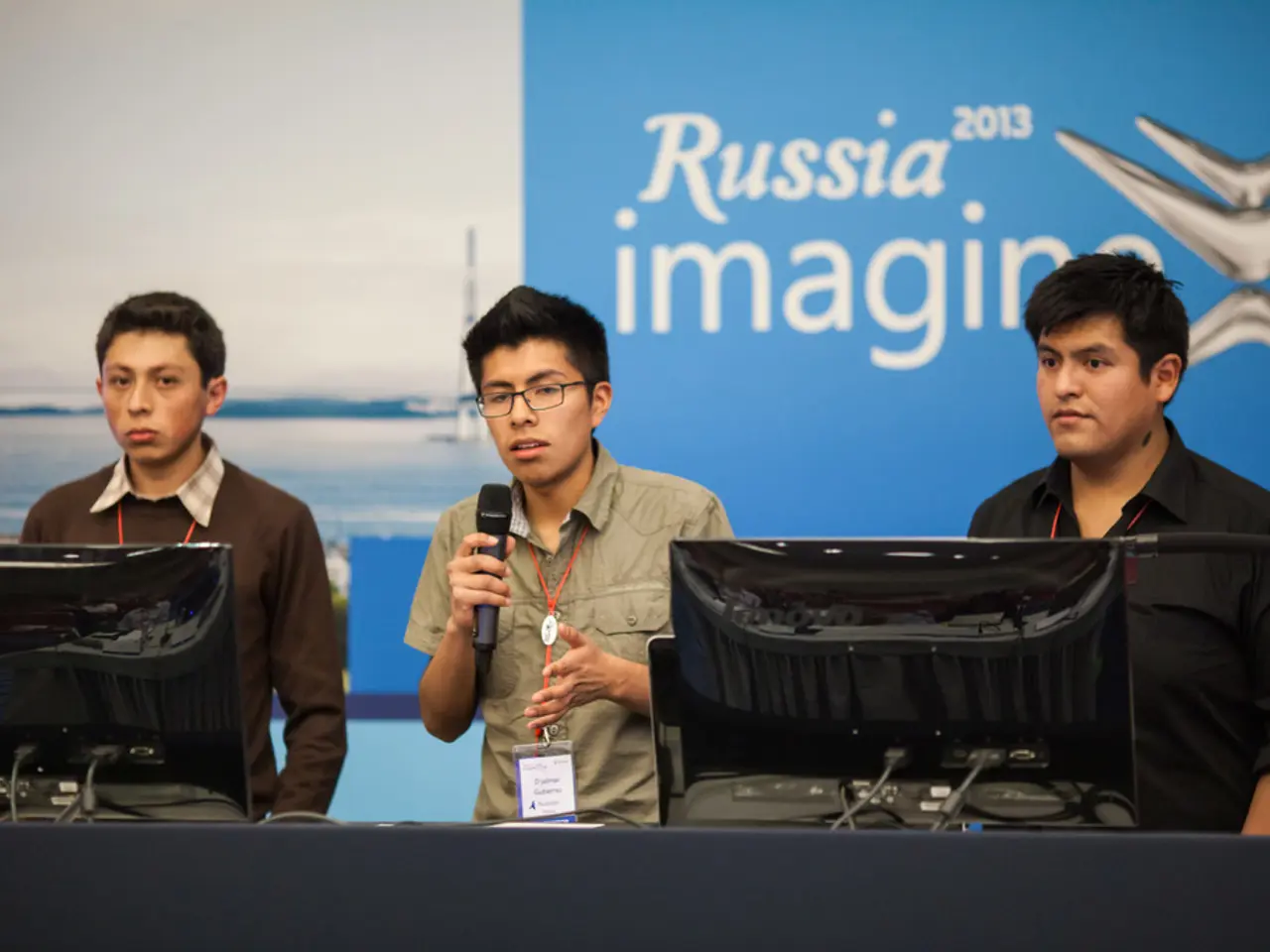Trump's Economic Proposals in Alaska: Can Putin Influence Trump with Business Deals?
In the complex landscape of international relations, the trade relations between Russia and the United States continue to evolve, albeit at a reduced scale compared to past levels. Despite ongoing sanctions and geopolitical tensions, there are signs of mild growth under recent U.S. administration policies.
Since Russia's invasion of Ukraine in 2022, Western countries have imposed over 21,692 sanctions on Russia, including import bans on Russian oil and freezing of central bank assets. These measures have significantly impacted the trade between the two nations. However, trade turnover, while symbolic compared to the sizable $29.2 billion in 2014, shows a positive trend with increases of around 20% reported recently.
The trade volume in the first half of 2025 rose by almost a third compared to the same period in 2024, reaching $2.8 billion. Despite a 25.8% decrease in total goods and services trade in 2024 compared to 2023, the trade figures still represent a notable increase under the new U.S. administration.
Key commodities predominantly traded include Russian exports of platinum, fertilizers, and enriched uranium, while the U.S. exports pharmaceuticals and medical equipment to Russia. Historically, petroleum products, ferrous metals, aluminum, and enriched uranium were significant; now petroleum exports have sharply declined due to sanctions and geopolitical factors.
The U.S. had a goods trade deficit of $2.4 billion with Russia in 2024, which decreased by 37.6% year-on-year. However, the U.S. has a services trade surplus with Russia of $873 million in 2024, reflecting ongoing exchange in service sectors despite tensions.
Prospects for broader economic cooperation are recognized but currently limited by geopolitical challenges. Both countries recognize the potential for expanded cooperation in trade, energy, digital technology, high tech, space exploration, Arctic cooperation, and regional contacts between the Russian Far East and the U.S. West Coast. However, these remain largely aspirational given current geopolitical dynamics.
As the Russia-U.S. trade relations continue to unfold, the ongoing discussions between the two nations' leaders, such as the scheduled meeting between U.S. President Donald Trump and Russian President Vladimir Putin in Anchorage, Alaska, will undoubtedly shape the future of these relations. The talks are expected to focus on ending Russia's three-year assault on Ukraine.
[1] Source: U.S. Census Bureau, U.S. Department of Commerce [2] Source: Office of the United States Trade Representative [3] Source: U.S. Department of State [4] Source: Russian Ministry of Economic Development
- The analysis of international relations reveals a complex picture, with trade relations between Russia and the United States evolving in a reduced scale, marked by ongoing sanctions and geopolitical tensions.
- In the realm of politics and general news, the trade relationship between the two nations has shown signs of mild growth under recent U.S. administration policies, despite war-and-conflicts such as Russia's invasion of Ukraine in 2022.
- In 2025, the trade volume between Russia and the United States rose by almost a third, indicating a positive trend, despite a significant decrease in the trade of key commodities like petroleum due to war-and-conflicts and sanctions.
- The economy of both countries is influenced by the trade, with the U.S. having a goods trade deficit and a services trade surplus with Russia, showcasing the importance of policy-and-legislation and finance in shaping these relations.
- Future prospects for broader economic cooperation between Russia and the United States lie in potential expansion in trade, energy, digital technology, high tech, space exploration, Arctic cooperation, and regional contacts; however, these aspirations are currently limited by ongoing war-and-conflicts and geopolitical challenges.
- In the face of these challenges, discussions between the leaders of the two nations, such as the planned meeting between U.S. President Donald Trump and Russian President Vladimir Putin, may shape the future of these relations, with the focus on resolving conflicts like the three-year assault on Ukraine.








